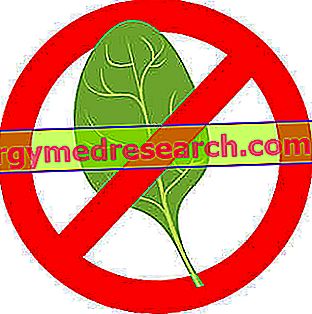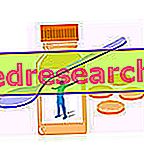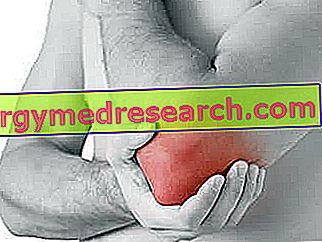Premise
Generality
What is the slag-free diet?
Non-slag diet is an improper name used to indicate low-residue or low-fiber diet.

Slag: dietary fiber
Dietary fiber is a collection of purely plant molecules, partly also contained in fungi, which cannot be digested by human beings.
The fibers can have very different chemical-physical characteristics; for example, some are soluble in water, while others remain as they are. A fraction of the solubles is also called viscose, in relation to the typically mucilaginous form that it assumes by dissolving in water. Insoluble fibers, on the other hand, tend to ferment, significantly increasing fecal volumes.
The fibers are very important nutritional factors, since they carry out tasks that are nothing short of useful for the body:
- Increased satiety and reduced energy intake with food;
- Regulation of intestinal peristalsis: insoluble ones tend to increase, due to the distension reflex, the contraction (of segmentation and advancement) of the smooth muscle of the colon;
- Slowing sugar absorption, with consequent reduction of the glycemic index and insulin surge;
- Modulation and reduction of lipid and bile acid absorption; the most evident effect is visible on cholesterolemia, which tends to decrease;
- In general, caloric decrease and positive action on the metabolism, with reduction of the risks linked to diabetes, replacement pathologies and cardio-vascular diseases;
- Cleaning of the intestinal lumen from toxic compounds (for example, the residues of food carbonization) and prevention of some types of cancer;
- Prebiotic action: some fibers are the "favorite food" of the good bacteria that colonize the intestine. It is known that physiological flora is responsible not only for intestinal homeostasis but also for the production of certain vitamins and immune support.
Note : the carbohydrates NOT available (nutritional factors with a strong prebiotic function) can support the beneficial bacterial colonies of the intestine without, however, excessively and mechanically stimulating peristalsis (similar to the viscous soluble fibers).
Features
Main features of the slag-free diet
The slag-free diet is a very poor diet of fiber; consequently, it is poor in foods of vegetable origin that are part of:
- III fundamental group of foods: cereals, tubers and derivatives
- IV fundamental group of foods: starchy legumes and derivatives
- VI and VII fundamental group of foods: fruits and vegetables rich in vitamin A and C
- Oilseeds: walnuts, hazelnuts, almonds, pine nuts, pistachios, pecans, Brazilian nuts, macadamia, peanuts etc.
- Bran and dietary fiber supplements.
Ancillary features of the slag-free diet
In addition to the very low concentration of fibers, the slag-free diet can benefit from further changes such as:
- Low lactose and lactulose concentration (resulting from milk heating)
- Total absence of non-tolerated molecules (food intolerances and allergies, drugs, supplements, etc.)
- Lowest possible concentration of toxic or irritating molecules (polycyclic aromatic hydrocarbons, acrolein, acrylamide, etc.)
- Absence of aggressive spices for intestinal mucosa (black pepper, chili pepper, coriander, cumin, turmeric, curry, ginger, wasabi etc.)
- Use of delicate cooking methods, total but not excessively prolonged and intense
- Prevalence of highly digestible foods
- Prevalence of well chewable foods and free of wood waste, such as seeds.
Practice
Practical interventions
First of all we need to reduce the portions and frequency of consumption of the fiber-rich foods described in the previous chapters. Moreover, it is necessary to prefer the parts without insoluble fibers and seeds. They are vegetables that are poorer in fiber than the average of the SAME group:
- Cereals, flours, and white, refined derivatives
- PASSED legumes with vegetables (NOT blended) - however, they are not recommended
- Peeled fruits and vegetables deprived of the core; better squeezed, extracted or centrifuged
- Raw leafy vegetables instead of cooked ones (to reduce portions); even if cooking offers the advantage of pre-digesting the fibers, reducing the effects of abdominal distension, bloating, meteorism, flatulence and diarrhea.
Other measures necessary for the proper functioning of the slag-free diet are:
- Avoid milk, especially hot milk, which can be replaced with yogurt
- Drink plenty of water, to compensate for liquids not taken with fruit, vegetables and pasta dishes
- Progressive reintroduction of dietary fiber
- Do not take food containing ≥ 1 g of fiber per serving
- Always consult the nutritional labels of processed foods, making sure they contain less than 1g of fiber per serving
- If considered useful, use probiotic supplements; it is advisable to pay close attention because in some cases they can make the situation worse.
Application
When is the slag-free diet necessary?
Although dietary fibers are very useful for the correct functioning of the organism, sometimes, for exceptional and health reasons, it is necessary to reduce them as much as possible or select them, ensuring only the soluble viscose fraction. This need may vary depending on the specific case and it would not be correct to generalize trope the specific nutritional interventions of the slag-free diet; however, hoping not to be too approximate, we can define that the slag-free diet finds application above all in the following cases:
| Acute Diarrhea | Chronic Diarrhea |
Unleashed by
| Provoked by
|
Supplements
Useful supplements in the slag-free diet
Potentially useful supplements in the slag-free diet are those that compensate for diarrheal discharges and provide nutrients typical of vegetables; in particular:
- Vitamins: vitamin C, carotenoids (especially beta-carotene, lycopene, etc.), vitamin K, folic acid
- Minerals: in particular magnesium, but also potassium.
The sources of probiotics may also be useful, possibly fortified with non-fibrous specific prebiotics (such as certain resistant polysaccharides), which help restore the homeostasis of physiological bacterial flora.



